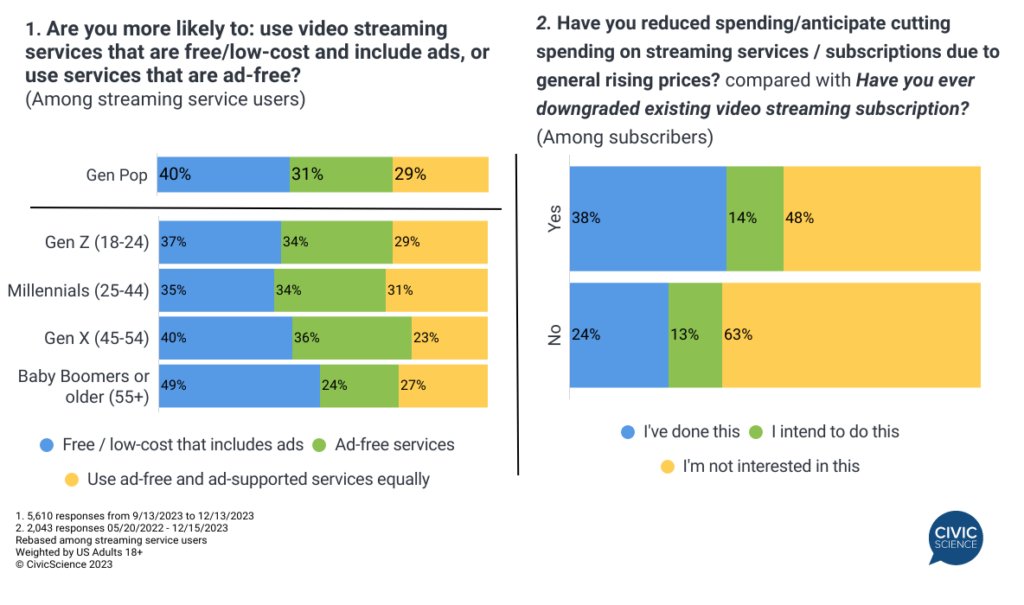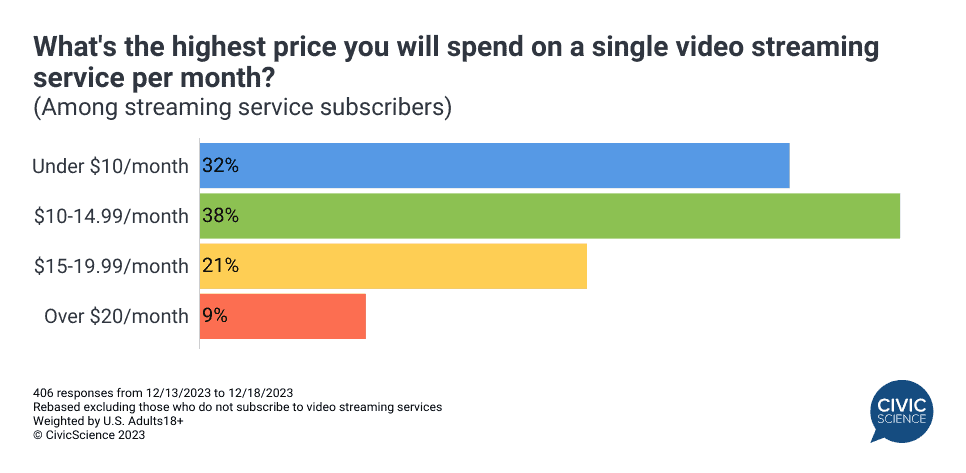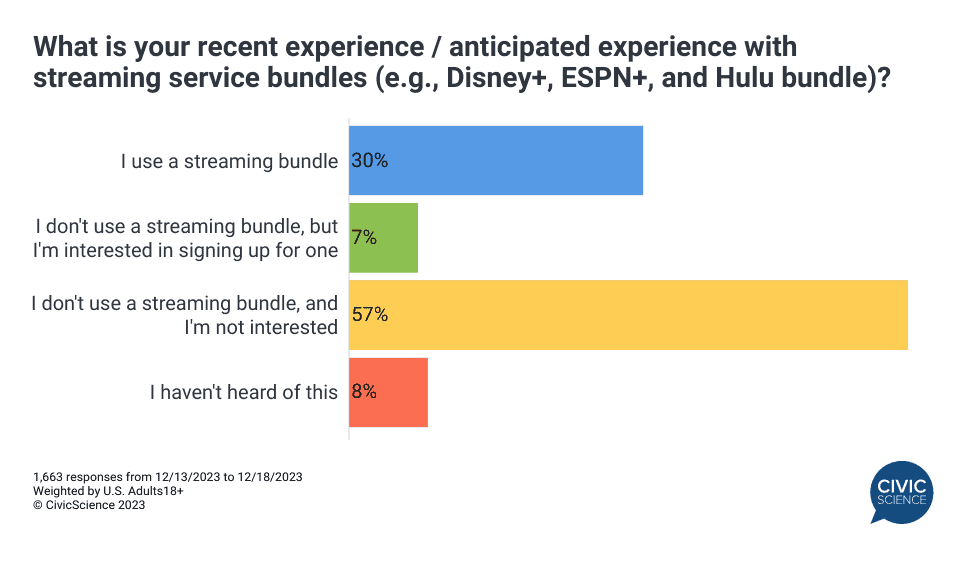Join CivicScience CEO John Dick for a free webinar Tuesday, December 19 as he shares the company’s latest data on the state of the U.S. consumer, the macro trends that will define 2024, and key predictions for what’s to come. Sign up here.
While holiday spending appears to be resilient this year, many consumers are taking on more debt to finance their expenses. A reckoning on debt-sinking shoppers could be on the way as a result in the months to come. These economic worries will be compounded by a divisive and uncertain election, further weighing on Americans’ already shaky emotional well-being.
Ongoing CivicScience tracking offers a glimpse into what consumers have in mind as they’re looking ahead to the new year. Video-on-demand streaming subscriptions are likely to be an industry to watch as consumers evaluate their spending in 2024.
Most video streaming subscribers opt for 3 or more subscriptions.
The variety and cost of carrying multiple video streaming subscriptions available has left many Americans feeling fatigued. Even so, the latest CivicScience data show 58% of subscribers have three or more subscriptions, while a third report they have four or more. Just under 1-in-5 (18%) report holding onto a single subscription.
Holiday shopping could force cost-cutting measures for these multi-subscription streamers – consumers with three or more streaming subscriptions are more than twice as likely as those with just one subscription to report they’re taking on any amount of debt to buy holiday gifts this year.
Subscribers aren’t turned off by ads-based plans in order to save money.
The plurality of American video streaming subscribers (40%) say they feel more likely to exclusively use free or low-cost ad-supported streaming services rather than pay solely for ad-free services (31%). Tolerance of streaming service advertising is highly correlated with age; Gen Z adults are 10 percentage points more likely than Baby Boomers to prefer ad-free streaming services to less expensive, ad-supported streaming services.
Additionally, consumers aren’t afraid to downgrade from ad-free plans. In fact, recent CivicScience polling data show nearly 2-in-5 consumers who have cut back spending on streaming services in the last year have switched to ad-supported plans, and another 14% intend to do so.

Take Our Poll: Would you accept ads on a streaming service like Netflix or Hulu if it meant paying less per month?
Subscribers prefer to spend no more than $15 per subscription.
Carrying multiple streaming subscriptions can quickly add up to a hefty monthly financial burden for consumers. What is the limit Americans have in mind when considering a subscription to a streaming service? The majority (70%) say $15 is their max limit for one individual streaming service – 38% say $10-$14.99 is their cut-off point.

Could bundling help streamers keep multiple subscriptions without the higher cost?
Bundling ads-based services could offer another alternative for cost-weary subscribers. While the idea of offering multiple services in one package is not new, the concept seems to be gaining momentum in the streaming industry. Verizon is the latest to jump into the bundle game, with a bundle for ad-supported subscription plans to Netflix and Max that would save users 40% – other combos could be on the way soon as well.
Three in ten U.S. adults say they’re currently utilizing a streaming service bundle of some kind. Additionally, 7% of respondents without a bundle currently have an interest in signing up for one in the future.

Impacts from taking on debt for the holiday will most certainly have far-reaching implications for consumer spending. Americans aren’t shying away from downgrading to ad-based plans to save on costs, but will it be enough? Can the industry lean into bundles to keep subscribers happy?
Join the Discussion: Do you think video streaming service bundles (e.g., the Disney+, ESPN+, and Hulu bundle) might become more common in the future?
Click here to register for CivicScience’s webinar exploring additional trends that are emerging in 2024. Attitudes change before behaviors do, start here to see how CivicScience clients stay ahead thanks to our database of over 500K polling questions.








